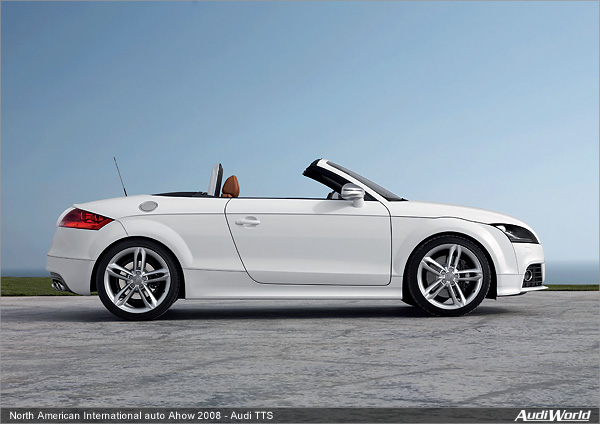The Audi TTS: The Body

The superior performance of the TTS can be partly attributed to the technology of its bodywork, whose hybrid construction combines two different types of materials. Steel is used at the rear end, while the front and center sections of the body are built from lightweight aluminum.
Audi first developed this principle, known as the Audi Space Frame (ASF), in the early 1990s, triggering a revolution in body manufacturing. Extruded sections, pressure die-castings and load-bearing aluminum panels together form a light, rigid and extremely safe structure. On the Coupe, the side sections and the roof are laser welded together, producing a precision seamless joint another clear indication of how Audi strives for perfection when building its cars.
The construction of the TTS has the added major benefit of optimizing distribution of the axle loads and reducing the vehicle’s total weight. The Coupe’s body weighs a mere 206 kilograms (454.15 lbs), of which 140 kg (308.65 lbs) is aluminum and 66 kg (145.51 lbs) steel. In the case of the TTS Roadster, whose body incorporates special reinforcements, the figure is 251 kilograms (553.36 lbs). All in all, the manual version of the Coupe weighs in at just 1,395 kilograms (3,075.45 lbs), equating to a power-to-weight ratio of 5.1 kilograms (11.24 lbs) per hp. The Roadster’s weight of 1,455 kilograms (3,207.73 lbs), meanwhile, corresponds to a ratio of 5.4 kg/hp (11.90 lbs/hp).
The Audi TTS instantly stands out as the dynamic flagship of the TT model line. One of the design highlights is undoubtedly the headlights newly designed bi-xenon units featuring a horizontal strip of white LEDs that serve as daytime running lights. The single-frame grill in a platinum gray finish is embellished with slender chrome strips, while large air intakes in the restyled front apron add to the striking look.
When viewed in profile, it is not only the large 18-inch wheels that stand out; the widened, deeper door sills are equally eye-catching. A muscular rear bumper, a gray-colored diffusor trim, plus two sets of twin tailpipes protruding from the left and the right inject the vehicle’s tail with a sporty character all of its own. The spoiler on the TTS extends automatically when the speed reaches 120 km/h (74.56 mph) and retracts again when it drops back to 80 km/h (49.71 mph).
Both the Coupe and the Roadster measure 4,198 millimeters (13.77 ft) long and 1,842 mm (6.04 ft) wide; the hard-top TTS is 1,345 mm (4.41 ft) in height, its open-top counterpart 1,350 mm (4.43 ft). The Roadster features an electrohydraulically operated soft top which opens and closes in twelve seconds, even on the move at speeds below 50 km/h (31.07 mph). The soft top incorporates a large glass rear window and folds in a “Z” shape. Neither a tonneau cover nor a cover flap is needed. Extra matting between the headlining and the outer skin improves insulation, and an electrically extending/retracting wind deflector shields the occupants’ necks from drafts when the hood is down.
The equipment, specifications and prices stated herein refer to the model line offered for sale in Germany. Subject to change without notice; errors and omissions excepted.
|
